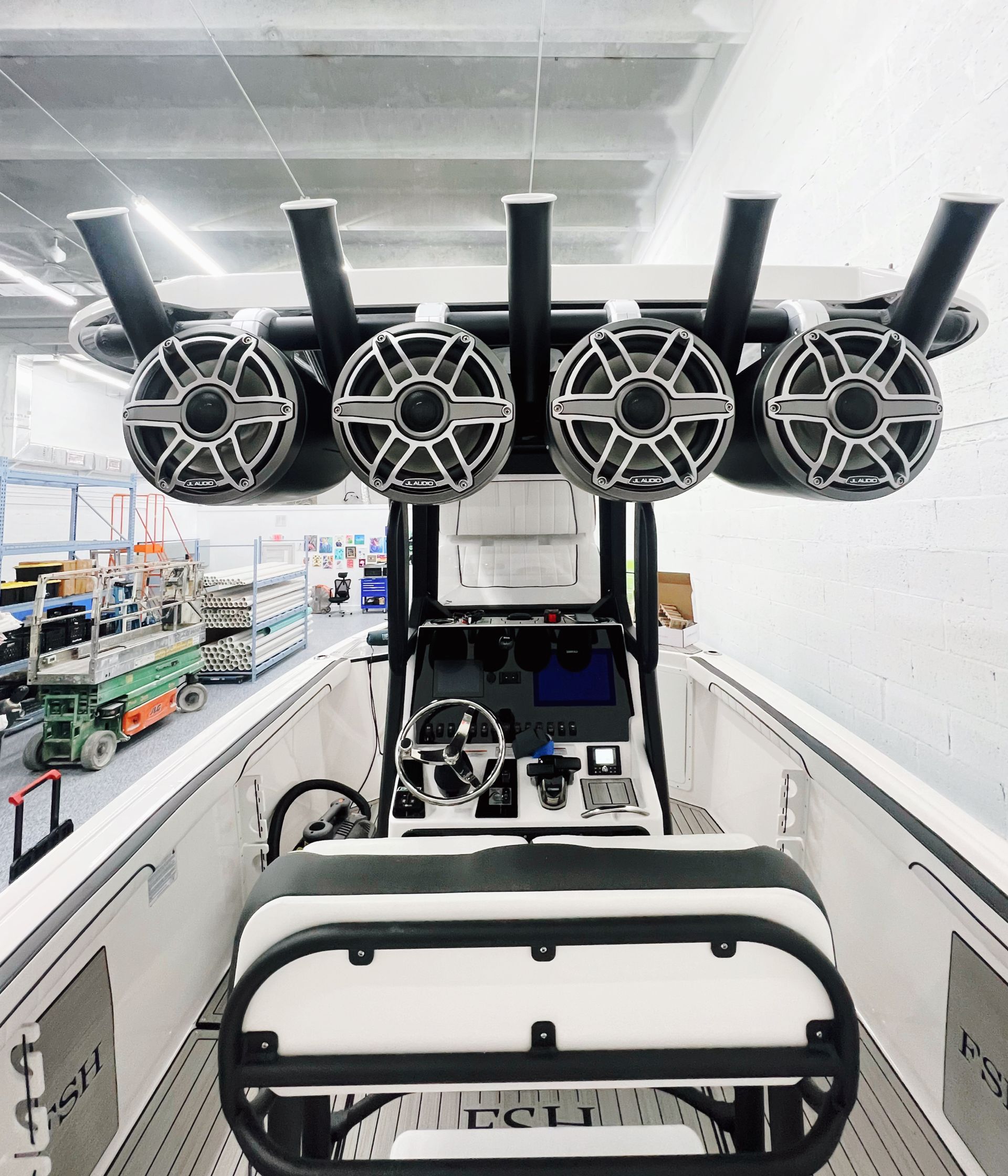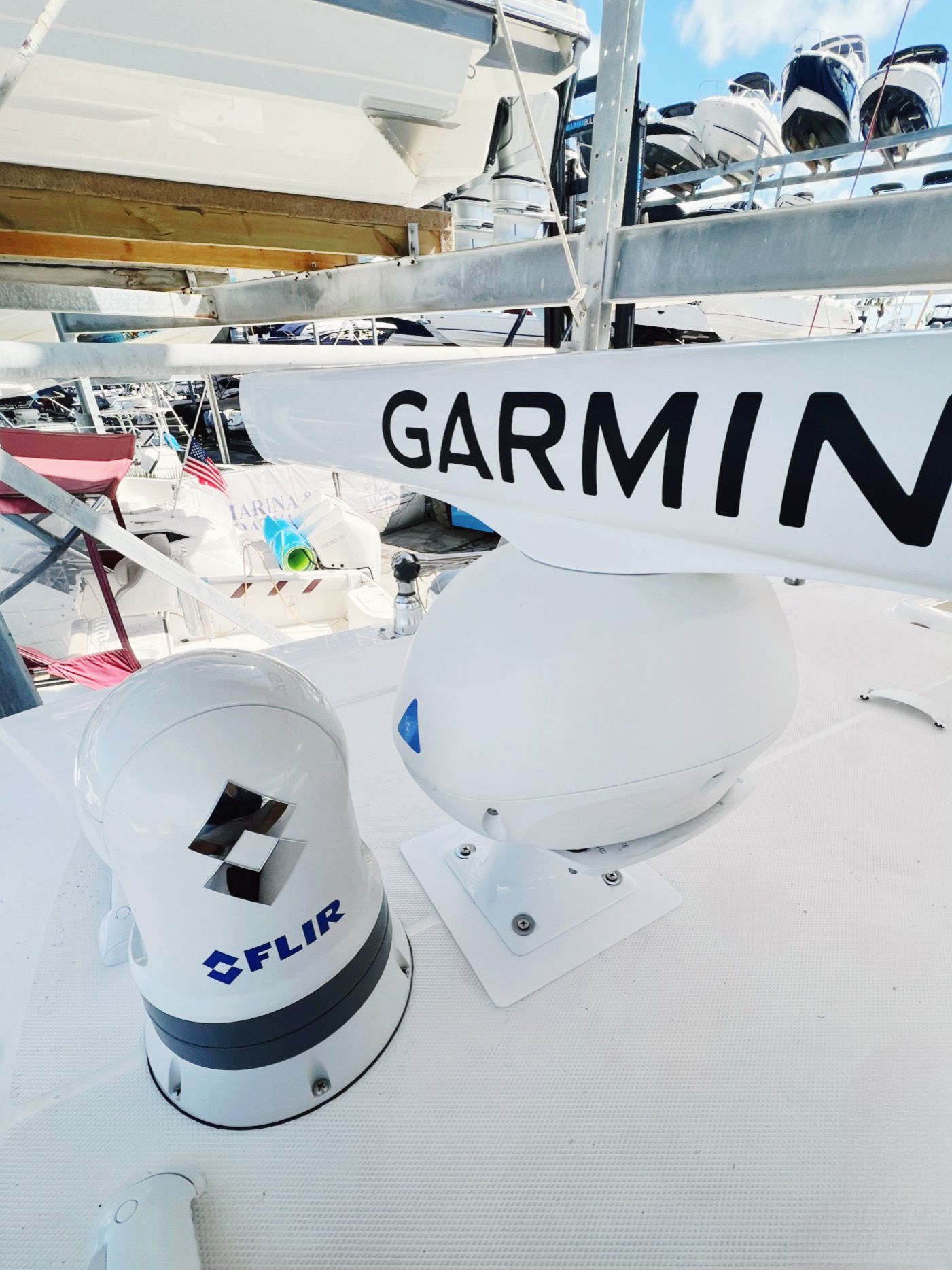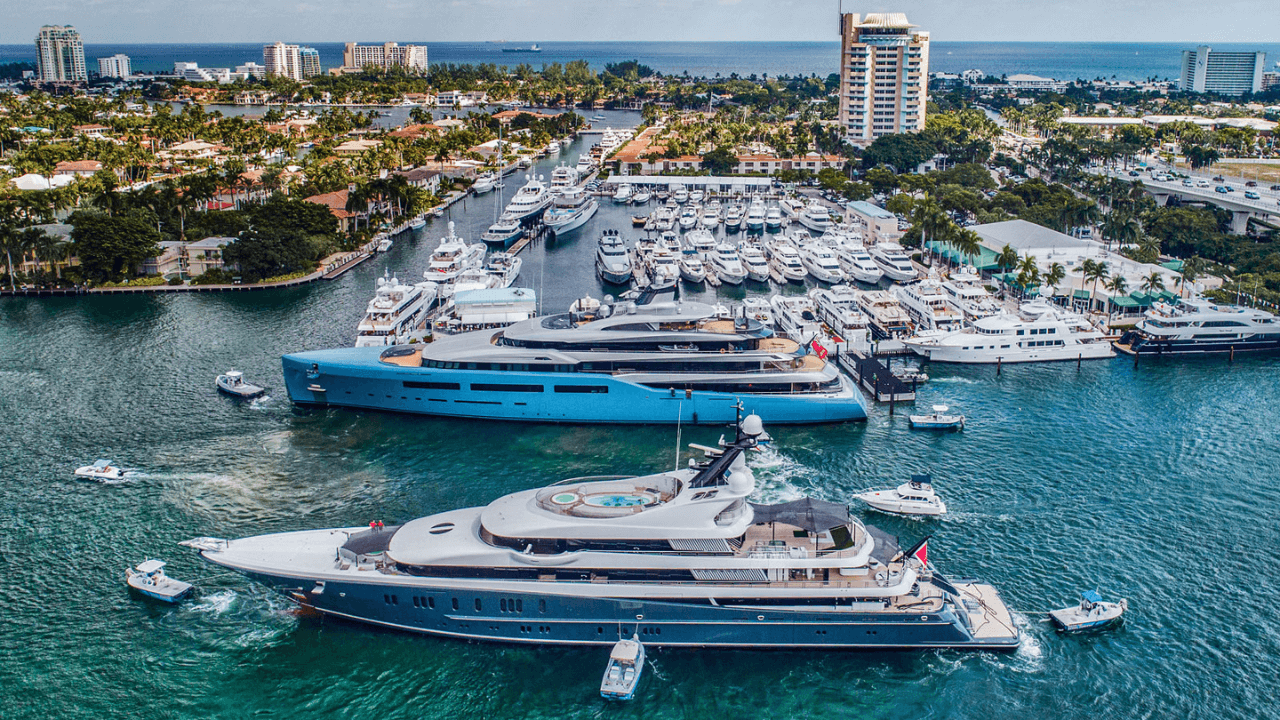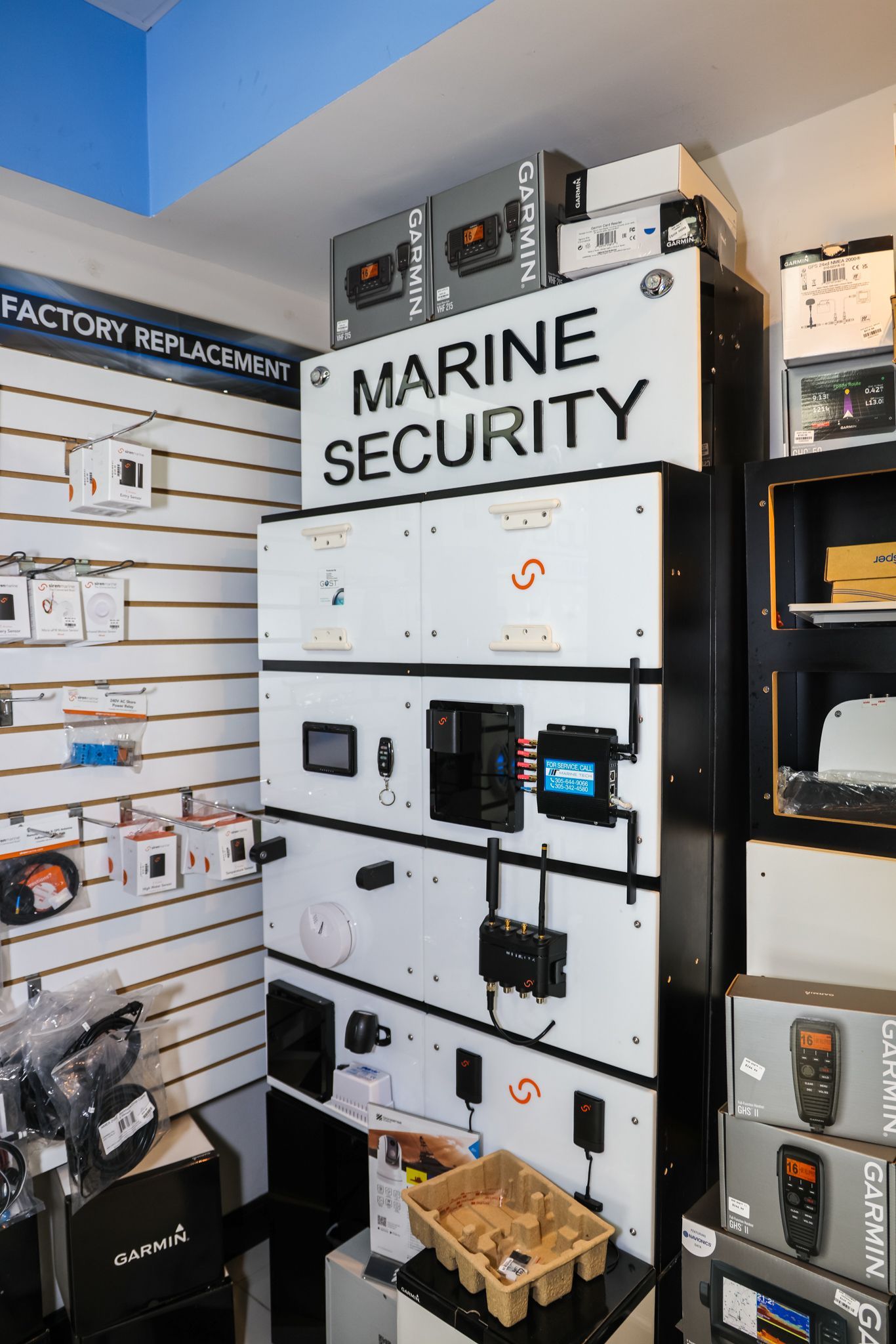10 Best Sailing Marine Electronics You Must Have (2023)
Navigating the open water is thrilling, but it requires careful planning and the right equipment.
As technology continues to develop, so too does the arsenal of marine electronics aimed at making sailing safer and easier.
Professionals and recreational sailors alike continually look for gear that delivers optimum performance.
From advanced navigation systems to cutting-edge communication devices, these tools prove to be indispensable for any sea-venturer.
However, with a wide array of options in the market, making a choice can be daunting.
This guide zeroes in on the absolute must-have sailing marine electronics in the industry.
Best Sailing Marine Electronics You Must Have
1. GPS Navigation System
GPS or Global Positioning System is arguably the most important marine electronic that every sailor must have on their boating adventure.
A GPS Navigation System allows users to pinpoint their current location, plot courses, monitor speed, and determine the distance to a specific location.
Given the importance of sailor safety, having accurate data in real-time is crucial, which is why the GPS system is at the forefront of marine electronics.
The level of precision and reliability a GPS navigation system offers is incomparable to anything else.
On a sailing journey, unexpected circumstances and situations can arise that can change your course or destination.
In such scenarios, having a GPS navigation system can help navigate through unchartered territories and keep you on course, making it an indispensable device for sailors.
The advancement in technology has provided us with high-end GPS systems that offer various additional features including track logging, chart plotting, and even fishfinding capabilities.
These additional features integrated into the GPS system do not only provide convenience but also enhance the overall sailing experience, making it more enjoyable and safer.
Furthermore, modern GPS systems support Bluetooth and WiFi connectivity , allowing you to connect it with your smartphone or tablet, thus extending its functionality and ease of use.
By watching this video, you will get a comprehensive understanding of how to use a GPS Navigation system effectively which includes chart plotting and other useful features. Seeing these features in action might help you better understand their importance and the benefits of having a comprehensive GPS system on your boat.
The aesthetic aspect of the system is worth mentioning too. Most of these systems come with high-resolution displays that offer different customizable views of charts, making it easier to interpret the data.
Lastly, GPS navigation systems come with multiple mounting options that can be suited to the specific configuration of your boat, thus providing flexibility for installation .
This device is a real game-changer for sailors – potentially making their sea life easier, safer, as well as enjoyable.
Indeed, on marine journeys, the importance of a reliable navigation system – that a GPS provides – cannot be overstated.
Before setting sail, make sure this essential electronic device is installed and functioning properly on your boat.
So, if you haven’t already, consider investing in a high-quality GPS Navigation system. It’s certainly at the top of the list of best sailing marine electronics you must have.
2. Marine Autopilot
When considering a comprehensive sailing marine electronic setup , one gadget that stands out is the Marine Autopilot.
Marine Autopilot assumes the helm in the captain’s stead, allowing for navigation over long distances without manual steering .
The Marine Autopilot provides precise course control, frees up the crew for other tasks, and reduces overall fatigue.
In addition, the Marine Autopilot includes advanced features like wind vane mode and waypoint navigation .
Today’s autopilots are smart machines that can learn the sailing characteristics of your unique vessel, further optimizing their accuracy and efficiency.
The device’s ability to learn how your boat responds to various conditions results in improved performance, making it a must-have for sailing enthusiasts and captains alike.
This accumulation of knowledge results in smoother, more efficient sailing in various conditions, ranging from calm seas to stormy weather.
Investing in a Marine Autopilot will add a new dimension to your boating experience, with improved fuel efficiency, better progress tracking, and increased safety.
The use of autopilots also greatly reduces human errors , one of the leading reasons for accidents at sea.
Most modern Marine Autopilots are compatible with other onboard electronics, such as GPS devices and AIS systems .
This integration of systems helps automate the entire sailing process, thereby maximizing efficiency and reducing the chance of error.
Remember that Marine Autopilots are not just for large yachts and commercial vessels, but are also suitable for smaller sailboats .
Lastly, when choosing a Marine Autopilot, it’s not just about functionality, but also ease of installation and use, as well as durability and reliability in all weather conditions.
By embracing technology like the Marine Autopilot , you can take your marine adventures to new heights, making your sailing expeditions safer and simpler.
3. AIS (Automatic Identification System)
One of the best marine electronics every sailor must invest in is the AIS or Automatic Identification System .
It’s an essential piece of technology originally developed to prevent collisions at sea.
In brief, AIS works by transmitting information such as ship’s identity, location, speed, and course to other vessels fitted with AIS.
Its function is not limited to just navigation aid , but also includes assistance in search and rescue operations as well as maritime domain awareness and environmental protection initiatives.
Understanding how AIS works can significantly enhance your safety measures at sea, and communication with other vessels.
This technology, in a nutshell, encourages seamless communication essential in the vast and sometimes unforgiving marine environment.
Moreover, there are mainly two types of AIS – Class A and Class B, which are suited for different kinds of vessels based on their needs and usage.
It’s crucial that you understand the functions and limitations of both types to choose the one that best suits your vessel and sailing conditions.
Through this informative video, you will experience a hands-on understanding of the AIS system.
Whether you’re a seasoned sailor or just starting out, learning more about practical examples of AIS usage will indeed be beneficial.
Remember, being equipped with the right knowledge can set you miles apart when it comes to safe and efficient sailing!
AIS has great features that augment the functionality of other navigation systems, therefore, making your voyages safer.
Furthermore, AIS is not just for commercial vessels , but also equally beneficial for smaller recreational and leisure boats.
Therefore, it is undeniable that investing in an Automatic Identification System is critical to overall safety, improved navigation, and efficient communication on water.
It’s worth noting though, that while AIS is a potent tool , it should not be exclusively relied upon for navigation; it should rather act as a supplement to a comprehensive system of safety measures.
4. Marine VHF Radio
The Marine VHF Radio is an essential piece of sailing marine electronics that allows sailors to communicate with each other, the coastguard, and other relevant authorities while out at sea.
This radio operates on very high frequency (VHF) and is specifically designed for marine communications, making it a must-have on any sailing vessel.
Its signal strength and transmission range are dependent on various factors, including the quality of the radio itself, atmospheric conditions, and the height of the antenna above the sea level.
One of the main advantages of the Marine VHF Radio is its capacity to broadcast to all stations within its range, thus facilitating widespread communication which is crucial in times of distress.
The Marine VHF Radio is not just a communication tool, it’s also an indispensable safety device on any sailing vessel.
The above quote draws attention to the dual functionality of the VHF radio – communication and safety. During emergencies, it can be used to send out distress signals (called Mayday calls) and to communicate with rescue authorities, thereby playing a potentially life-saving role.
Many modern Marine VHF Radios also offer features like DSC capability (Digital Selective Calling) . This feature allows you to send a distress signal at the push of a button, which automatically includes your boat’s information and your GPS coordinates.
Another great feature to look for when choosing a Marine VHF radio is AIS (Automatic Identification System) integration. This helps you identify and follow the movements of nearby vessels, greatly assisting in navigation, particularly in foggy conditions or at night.
This radio also supports weather broadcasts which can be invaluable when out at sea. The early warning could provide the necessary time to change course or seek shelter when deadly weather is brewing.
The portability of the Marine VHF Radio provides another key advantage. Most models are lightweight and handheld making them essential gear for the safety of your life raft or dinghy.
The ease of use is also an important factor that determines the must-have status of marine VHF radios. They are designed to be uncomplicated and straightforward, allowing even the most inexperienced sailors to operate them smoothly.
Despite the advancements of satellite-based communication devices, the Marine VHF Radio remains a reliable and efficient means of marine communication and continues to be a standard piece of safety equipment on any sailing vessel.
While out at sea, the Marine VHF Radio acts as your lifeline, keeping you connected with the world onshore and ensuring that help is just a message away in case of any difficulties or dangers.
Remember, the radio does more than just receive and transmit messages. It’s your early warning system, your means of reaching out for help in danger, and your way of keeping apprised of the movements of other vessels. Therefore, it is definitely a must-have when compiling your list of top marine electronics for sailing.
5. Depth Sounder
One of the most important marine electronics you must have while sailing is the Depth Sounder .
Just like its name, a Depth Sounder, often termed as an echo-sounder, is a tool that allows you to measure the depth of the water beneath your boat.
In straightforward terms, it transforms electrical impulses into sound waves , which are then transmitted into the water.
Once these sound waves hit something solid, like the water’s bottom, they revert and get caught by the receiver on your boat.
The sound impedance calculation gives the precise depth of the water .
Scientifically, it’s similar to active SONAR technology, although a depth finder is usually not as sophisticated or as multi-pronged in its approach.
Today’s modern depth finders can give detailed reports about the nature of the seafloor and possibly identify large objects on it.
The information provided by the depth sounder is usually displayed on a digital LCD or LED screen allowing for quick reference.
This device is not only essential for navigation but also for a safe and smooth sailing experience.
Knowing the underwater terrain gives the skipper peace of mind by ensuring no sudden bottom shallows that could potentially be damaging to their vessel.
Having a depth sounder onboard is a matter of essential safety and it’s crucial to familiarize yourself with how it works and how to interpret its feedback.
On top of safety considerations, a depth sounder can also be immensely useful for activities such as fishing , as certain fish species prefer specific depth ranges.
By watching the embedded video above, you will learn how to add a depth finder to your boat.
The video provides a comprehensive guide, demonstrating the nitty-gritty details of installing and using a depth sounder.
6. Wind Speed and Direction Indicator
In the world of sailing , the significance of a Wind Speed and Direction Indicator cannot be downplayed.
This device is vital in helping sailors and boat operators navigate waters by giving them accurate and real-time data about the wind’s speed and direction.
Understanding wind patterns is critical as it helps in setting the sails properly, thus improving the boat’s performance.
Comprehending the wind’s speed can help sailors stay safe by preventing the boat from capsizing during rough weather.
Primarily, a Wind Speed and Direction Indicator is composed of two components: Anemometer for measuring speed, and a Vane for determining direction.
The placement of these devices is also crucial; typically, they’re installed at the masthead to deliver more accurate data as they can sense the atmospheric conditions better from up there.
Regarding the mentioned quote, when installed in a higher place, these devices can sense winds without any obstruction, therefore offering an accurate understanding of the prevalent conditions.
Further, it’s quite important to note that every device should be installed with consideration for their line of operation to perform efficiently and accurately.
If you are serious about your sailing experience, choosing a digital Wind Speed and Direction Indicator would be a great investment.
Most modern devices not only provide accurate data, but they also come with the capability of transmitting this data to other onboard devices like chart plotters, GPS, and other networked marine electronics.
This type of data integration is crucial as it allows for better decision-making and improves navigation.
Additionally, some modern Wind Speed and Direction Indicators come with features like a close-hauled wind indicator and true/apparent wind speed indicator that offer even more detailed data and enhance your sailing experience.
To maintain these devices’ efficiency, regular maintenance and calibration are necessary.
Most devices are designed to withstand harsh marine conditions, yet their durability can be extended through proper care and repair when needed.
In conclusion, a Wind Speed and Direction Indicator is an essential piece in your marine electronics suite that significantly helps in sailing safely and efficiently.
Investing in a device with added features and integration capabilities would certainly be a wise decision for keen sailors or operators who wish to harness the power of wind for unhindered sailing.
7. Marine Radar System
A Marine Radar System is an essential piece of equipment for any avid sailor or maritime enthusiast.
It uses radio waves to determine the range, angle, and velocity of objects.
Essentially, it provides a real-time, two-dimensional view of everything within range of your vessel.
A high-quality radar system can give you a detailed outline of the coastline, identify other vessels, and even signal buoys and landmarks.
The embedded video will introduce how radar works and what you can expect from a marine radar system.
It provides a practical explanation, which would be useful for any sailor, newbie or veteran.
In adverse weather conditions, fog, or in the dark, marine radar proves to be a vital tool for navigating safely.
A good marine radar system will significantly increase your situational awareness and provide essential safety around the waters.
As highlighted in the statement above, marine radar contributes significantly to the overall safety of a voyage.
It enables the identification and tracking of potential obstacles or hazards, minimising the risk of collision.
However, using marine radar effectively requires knowledge and practice .
The system has many functions and settings that can be adjusted to improve its performance.
For example, the gain control increases the sensitivity of the receiver, and the sea clutter control filters out unwanted noise caused by waves.
Remember that the key to successful navigation is not relying on a single source of information.
While the Marine Radar System is an extremely useful tool, it should be used in combination with other methods such as GPS, visual markers, and maps to confirm your position and the locations of potential hazards.
Take the time to fully understand your radar system and how to interpret the data it provides, and you will be well on your way to more confident and safer sailing.
8. Shipboard Internet System
In the realm of marine electronics , one of the major inventions of our time is the Shipboard Internet System .
Having an Internet System on your boat is a true game-changer in ensuring a smooth, reliable and connected sailing experience.
Whether you want to stay connected with loved ones back home, stream movies or keep track of your business operations, an efficient internet system is an absolute must-have.
You might be navigating through remote regions, but a reliable shipboard internet system ensures that you are never too far away from the digital world.
An efficient and reliable Internet System on your ship enables you to stay connected with the world even if you are in a remote region.
Validating the above statement, onboard internet bridges the gap between remoteness and connectivity.
It enables you to stay updated with the latest weather forecasts , mapping routes, and other necessary updates which go a long way in ensuring safe navigation.
The versatility of a shipboard internet system is such that you are able to use it for simple tasks like checking emails, and also complex ones like monitoring your vessel’s systems.
Moreover, in today’s age where social media shares an inherent part of our lives, internet on board lets you share your sailing adventures with your friends and family around the world.
However, to ensure that you make the most of this boon, its setup on board your vessel needs to be top-notch.
Factors such as printer connectivity, WiFi range, bandwidth management, and data storage should be thoroughly considered during setup.
Moreover, security should also not be ignored as security breaches could lead to potential losses.
However, once properly installed and managed, a shipboard internet system can significantly improve your sailing experience in ways that you might not have imagined.
Therefore, investing in a high-quality shipboard internet system is one of the most lucrative decisions that one can make in the field of marine electronics.
This not only promises an enhanced sailing experience but also equips you with the power of the digital world at your fingertips, even in the middle of the sea!
9. Marine Binoculars
Navigating the vast waters requires you to have the best navigation tools, and Marine Binoculars make a significant part of this.
When you are out in the water, every detail matters, and that is what these specialized binoculars provide.
Besides their typical use of availing distant views, Marine Binoculars are made with unique features specific for water environments.
This distinction sets them apart from regular binoculars, and they offer far much usability in maritime situations.
Besides being waterproof, they possess a corrosion-resistant body that ensures they withstand the salty air at sea that is known to rust everything metal.
Additionally, Marine Binoculars come equipped with a built-in compass that aids in marine navigation.
This feature comes in handy when you need to map out your routes in relation to landmarks or other ships in the waters.
They also offer image-stabilization features that are invaluable for a rocking boat in the rough seas, allowing you to spot objects without the image bouncing around.
The field of view of Marine Binoculars is also considerably wider, making it easier to locate buoys, identify sea vessels, or spot birds and marine animals from a distance.
The built-in range-finding mechanism can help you tell how far an object or shore is from your vessel, which can inform your navigation decisions.
Through the video, mariners can see firsthand how different models of Marine Binoculars are tested and function in real-life sailing situations.
It also offers detailed advice on what to look for when purchasing the binoculars to ensure you get the perfect fit for your sea adventures.
The ability to see clearly and distantly is vital to the safety and success of your trip.
It’s a necessity for the modern seafarer, ensuring that you keep track of your surroundings, and that you can anticipate any obstacle or remarkable sight even before it comes close.
10. Digital Compass
The digital compass has become an essential tool for any seafarer, significantly enhancing navigation accuracy and convenience. Instead of a magnetic needle, like traditional compasses, a digital compass utilizes electronic sensors to determine the vessel’s direction.
These sensors often work together with other functions on the boat, like the GPS system , to provide a more accurate and comprehensive navigation experience.
You will find it exceptionally useful when sailing in murky waters or poor visibility conditions, where traditional landmarks are difficult to identify.
Furthermore, digital compasses can be calibrated to make corrections for any existing magnetic variation in certain geographical areas. That means you can rest assured knowing your direction readings would be as precise as possible .
The measurements of a digital compass appear clear and bright on an easy-to-read digital display, enhancing readability for the sailor.
Calibration, convenient digital display, and integration with other tools on your vessel are just some highlights that make a digital compass a must-have for seafarers.
This functionality can be pretty crucial during nighttime sailing, adverse weather conditions causing low visibility, or when your eyes are simply tired from staring at the water.
In addition, digital compasses often come with built-in illumination, allowing you to get your readings at any time of the day or night, regardless of the light conditions outside.
Another distinctive attribute of the digital compass is its compact and handy design .
Not only does this save precious space on the boat, but it also allows for easy installation and usage, compared to their bulky traditional counterparts.
You can mount it almost anywhere – on the dashboard, the wall, or even carry it handheld, based on your preferences and available space.
Moreover, you don’t have to worry about the durability of a digital compass .
Most of them are designed to be weather-resistant, shock-resistant, and enduring, making them an effective companion for sailors in any environment or weather conditions.
Digital compasses are available in a wide range of price points , depending on the brand, features, and the level of accuracy they provide.
Therefore, whether you are a recreational boater or a professional mariner, there is a digital compass out there that is perfect for your specific needs and budget.
Remember, navigation is the heart of any sailing journey, and a reliable digital compass is one of those tools that ensure you stay on course.
It provides a quick and easy way to check your heading, makes nighttime and poor visibility sailing much safer, and is a worthy addition to your marine electronics toolkit.
The Bottom Line
After examining the various kinds of marine navigation equipment, it’s evident that each serves a critical role in ensuring safe and efficient marine voyages.
From GPS systems that offer precise location tracking, to autopilots that minimize human error, AIS for better communication, VHF radios for emergency situations, depth sounders for sensing underwater obstructions, to wind speed and direction indicators that aid in navigation-related decisions.
Additionally, radar systems offer critical data in poor visibility conditions, while marine binoculars provide enhanced field of view.
At the same time, a shipboard internet system ensures connectivity and a digital compass for easier, faster, and reliable directional readings.
These technologies have not only revolutionized marine navigation but also significantly cut down risks, promoting safer and more efficient sea excursions.
Contact Us
Contact Us
Recent Posts
CONTACT US
Looking to upgrade your marine electronics?
With more than 25 years of experience, we can help you get started today!




